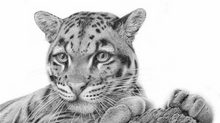Where can you see a Pangolin?
- Jon Isaacs
- Mar 27, 2021
- 4 min read
Updated: May 24, 2024
Most wildlife fans know that if you want to see a wild lemur you have to go to Madagascar. What some readers may not realise is that on the mainland of Africa, species of mammals and birds are also often to be found in only localised areas. As there are a huge variety of habitats, and animals can be specialised in their needs, you may have to go hundreds, even thousands of miles to reach the location of a particular species. Even when you are at a known location, you still have to deal with problems such as if it’s nocturnal or whether you can actually find it in its environment.

It was because I’ve never seen aardvark, meerkat or pangolin in the wild, despite having been to several destinations that were supposed to contain at least two of these species, that my wife and myself were excited at seeing an advert for Tswalu in the Kalahari Desert. The area apparently contained several habituated meerkat groups. The advert also stated that aardvark were regularly seen in early spring, and that pangolin could occasionally also be seen during a couple of months of late winter. Now safari adverts are notorious for stating creatures are in a certain location, and when you go there the locals tell you the species hasn’t been seen for years or does exist, miles away. On a previous holiday we had spent eight days in Zambia, with the claimed highest density of leopard in Africa, and hadn’t even seen a leopard’s tail. However, the Tswalu advert was convincing, we’d never had a holiday in a desert and so we booked.

That’s how we ended up at Tswalu in September, early spring in the southern hemisphere. Tswalu is a lovely lodge in a huge reserve of “Green” Kalahari. It wasn’t long before we had met our guide and tracker, and were trundling off on our first game drive. Our first conversation with our guide centred on the likelihood of seeing pangolin and aardvark. Spotting and photographing meerkat should not be a problem as it was prime meerkat territory. Several groups were known including one group called “Jacob’s dune group,” who were habituated and were being researched by a university student. However, pangolin hadn’t been seen for several months and aardvark only occasionally at dusk. When one looked at the height of the pale grass that stood all around us, I could quite see why spotting a pangolin, which is about thirty centimetres in height, would be almost impossible, even if it was only metres off the sandy tracks that were our main roads around the reserve. Spotting and photographing aardvark at dusk also sounded difficult. Were our experiences of leopard tracking in Zambia about to be repeated?

An hour later the vehicle’s radio burst into life. One of the four vehicles out that afternoon had just found a female pangolin. Would we like to join them? Unbelievable! A very quick ten minutes’ drive and we found two of the other vehicles with all of the occupants gathered around a pangolin ball which resided in the middle of the sandy track. Joining them, we stared in amazement at the weird creature in front of us.
The Ground Pangolin, or Scaly Anteater, has a small head and pair of front legs. The hind legs are much larger and allow the creature to walk upright. It has a broad tail which aids balance. The whole upper surface of the creature is covered in scales composed of agglutinated hair whilst the underparts are sparsely covered with individual hairs. As we crowded around it, the pangolin unrolled and started to amble towards the roadside. Everybody followed it like the paparazzi, taking photos from all angles. Even the guides were photographing it, such was the excitement caused by its rare presence. The fourth vehicle roared up and we were joined by its South African visitors. One of the visitors, who immediately joined us in taking photos, said he had waited forty years to see a pangolin in the bush. No wonder everybody was excited. For about twenty minutes we followed its wanderings. On a couple of occasions, it looked like it was going to go down a hole but we managed to redirect it. I thought it might be stressed by our attentions but it didn’t seem to be. As one of the guides said, “It might have to put up with us for a while but there was every likelihood that it wouldn’t come into contact with another human for the rest of its life.” Eventually, everybody had taken more than enough shots and we all decided to leave it in peace. We watched it with affection as it slowly wandered off into the desert grass.
Everybody congratulated the tracker who had seen the pangolin’s tracks cross the road, had stopped his vehicle and walked into the grass to somehow locate it. He had a huge grin as everybody told him he was the greatest tracker of all time. Whatever we saw on the rest of the safari would be a bonus. Not only had we seen one of the most elusive creatures in Africa, we all had the photos to prove it!














































Comments